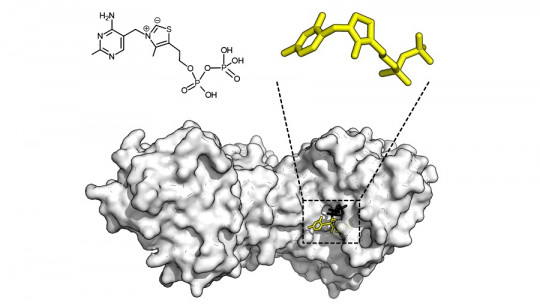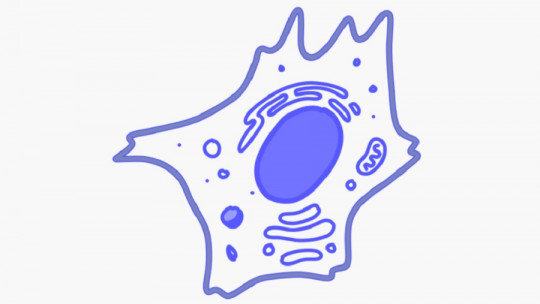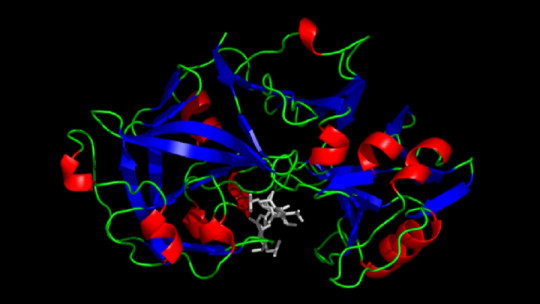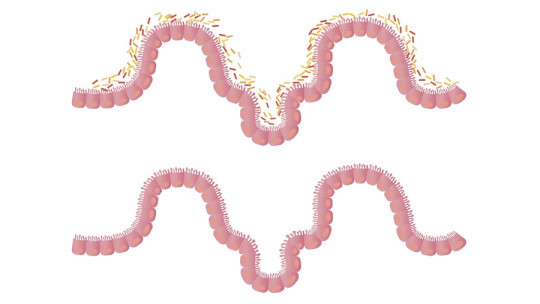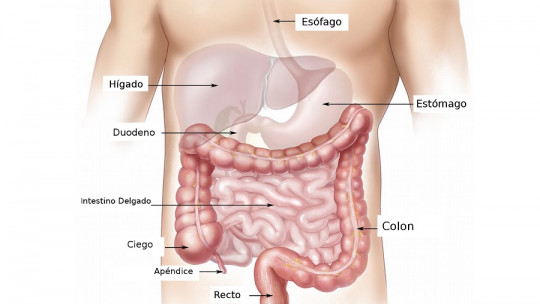The body carries out multiple chemical reactions that make up metabolism. Without them, we would not be able to obtain energy or simple molecules from food and, therefore, our body would not be able to carry out its vital functions.
However, there are cases in which, due to a genetic error, the substances responsible for degrading complex molecules, enzymes, are not produced as they should, bringing with them multiple metabolic problems.
The body produces about 75,000 enzymes and, if any of them are not present at adequate levels, a metabolic disorder can occur. Next We will see what metabolic disorders are and which are the most common
What is a metabolic disorder?
Both the human body and that of the rest of the living beings are containers of metabolic reactions, which allows us to compare life forms with chemical reaction factories. Metabolism includes any chemical reaction that occurs in the body of a living being, whether replicating DNA, breaking down fats, carbohydrates and proteins, repairing tissues, producing melanin…
The different compounds that our body requires to function are obtained through thousands of metabolic routes that occur inside cells. These chemical reactions occur thanks to the action of protein molecules, enzymes, of which our body has many different ones, more than 75,000. There is practically an enzyme for each substance that we introduce into our body and each of them specializes in some phase of a metabolic pathway.
It happens that, sometimes, due to genetic errors, an enzyme cannot be synthesized or does so incorrectly, causing the metabolic pathway in which it was expected to participate cannot be completed properly. This brings with it problems, either in the form of accumulation of substances as they are not properly degraded or, on the contrary, there is too much enzyme for a substance and it is present at very low levels. Whatever the specific situation, this causes metabolic disorders.

Metabolic disorders are pathologies that occur when there is an error in a gene sequence, which causes an enzyme to not be adequately synthesized and, consequently, the substance it degrades is present in harmful quantities for the body, whether due to excess or scarcity. This enzymatic defect brings with it complications for the entire organism, of varying severity depending on the metabolic pathway affected and whether the enzyme involved is essential or not for the life of the affected person.
As there are many enzymes in our body, there are hundreds of different metabolic disorders and, naturally, their prognosis varies among them. Some may involve simple temporary discomfort, others require constant clinical admissions and need exhaustive follow-up, and in some cases they can even be fatal. Because their cause is usually a genetic error, metabolic disorders can rarely be cured. However, by following a healthy lifestyle and avoiding exposure to certain substances, the prognosis can be very favorable.
While most metabolic disorders are rare when viewed individually, the truth is that About 40% of the population has some medical condition linked to poor synthesis of an enzyme or poor metabolism of a substance That is, the group of metabolic disorders are relatively common, although it is true that there are extremely rare and potentially fatal metabolic diseases.
The most common metabolic disorders
As we have seen, a metabolic disorder develops when, due to a genetic error, there are problems in the synthesis of one or more enzymes. Depending on how altered the production of the enzyme involved is, which metabolic pathway it affects and which of its stages the alteration is in, one pathology or another will occur. Among the most common metabolic disorders we find:
1. Obesity
Medically speaking, obesity is a complex disease. This medical condition has a multicomponent origin, being influenced by both genetics and environment, and in recent decades it has become a true pandemic in many countries. There are those who consider it the pandemic of the 21st century, since nearly 650 million people in the world suffer from obesity, and 1.9 billion are overweight.
Although for obesity to be diagnosed a body mass index (BMI) greater than 30 is required, the truth is that What most identifies a person with this disease is having excess fat This is important because there are people whose BMI is greater than 30 but do not have fat accumulation, as is the case with bodybuilders, and therefore do not present obesity.
Obesity affects the body in multiple ways. Although being thin is not synonymous with being healthy, being obese is confirmation that you are not healthy at all. Having excess body fat is related to a huge increase in the risk of suffering from cardiovascular diseases, diabetes, cancer, bone pathologies, and even mood and learning disorders.
It may be surprising, but the causes of obesity remain unclear. Although one of the most obvious causes is overeating, the truth is that many experts say that it is still not known if this is the real reason or, rather, it is a consequence. That is, first you became obese and then you had the need to eat in large quantities.
Obesity is considered a metabolic disorder, since it appears that It is associated with problems in the metabolic pathways of assimilation of certain nutrients A genetic component has been seen in the development of this condition, which means that it is true that some people may be predisposed to obesity if their family has a history of this disease.
However, Just because there is a genetic predisposition to obesity does not mean that things cannot be done to lose body fat and improve health Several environmental factors such as hours of sleep, physical exercise and diet influence this predisposition. Therefore, whatever its real cause, the best way to treat it is to start changes in your lifestyle, improve your diet and even go to psychotherapy if you have the possibility of an Eating Disorder (ED).
2. Diabetes
Diabetes is an endocrine and metabolic disease that can be of four types:
Diabetes is a metabolic disorder because there are defects in the synthesis or action of insulin, the hormone responsible for regulating blood sugar levels Due to this problem in insulin production, glucose cannot be metabolized properly and is circulating freely through the blood, causing serious damage to the body.
Some symptoms of diabetes are weight loss, weakness and fatigue, blurred vision, appearance of sores. In the long term, this disease can lead to even more serious complications, such as cardiovascular disease, kidney damage, mood disorders such as depression, and even death.
Prediabetes and gestational diabetes have a cure, but the other two do not. Type 1 and 2 diabetes are chronic diseases that require lifelong treatment, since normal glucose metabolism cannot be recovered and it is necessary to receive insulin injections. To ensure that their health does not worsen further, diabetics must constantly monitor their blood glucose levels.
3. Phenylketonuria
Phenylketonuria is an inherited metabolic disease in which, due to a genetic defect, Those who have it do not have the enzyme responsible for degrading phenylalanine, a very common amino acid found in foods rich in protein When phenylketonuria patients introduce phenylalanine into their body, they cannot digest it and it ends up accumulating.
This disease causes very light skin and blue eyes, since the melanin pigment cannot be synthesized if phenylalanine is not degraded. The accumulation of phenylalanine damages the central nervous system, causing intellectual disability. Other problems associated with phenylketonuria are strange skin odors, bad breath and smelly urine, delays in body development, behavioral problems, microcephaly, skin rashes and, of course, neurological disorders.
The only way to avoid the symptoms of phenylketonuria is eat an extremely low protein diet for life Everyday foods such as meat, milk, eggs, legumes and fish are full of phenylalanine and therefore patients with phenylketonuria cannot eat them.
- Related article: “Psychology and Nutrition: the importance of emotional eating”
4. Lactose intolerance
Lactose intolerance is an extremely common metabolic disorder worldwide (75% of the world population), although in Europe it is relatively rare, especially in the Nordic countries, Great Britain and northern Europe, with less than 15% of their population with this problem.
Those who suffer from it have problems in the synthesis of lactase, an enzyme produced in the small intestine that breaks down lactose, substance present in animal milk derivatives Lactase converts lactose, a substance that is not assimilable by the body, into glucose and galactose, which are assimilable.
Lactose intolerance is varied, with some cases being more serious than others. Depending on how affected lactase production is, more or less serious symptoms will occur after eating products with lactose, including flatulence, bloating, diarrhea, vomiting…
There is no cure for this disorder, since there is no known way to increase lactase synthesis. Yes, there are drugs that help digestion, but they do not work for everyone. The best way to avoid the symptoms of lactose intolerance is to reduce the consumption of dairy products and obtain calcium through other foods, such as broccoli, soy drinks, oranges, salmon, spinach…
5. Hypercholesterolemia
Hypercholesterolemia is a metabolic disorder in which, due to genetic factors combined with an unhealthy lifestyle, levels of LDL cholesterol (low-density lipoproteins, “bad cholesterol”) in the blood are above normal while HDL (high-density lipoproteins, “good cholesterol”), below.
The most common hypercholesterolemia is familial, associated with a hereditary genetic predisposition, although with a healthy lifestyle it can be prevented More than 700 possible genetic mutations have been found that can cause its appearance, which would explain why it is so frequent.
The main problem of this disorder is that it does not show signs of its existence until it is too late, when cholesterol accumulation has already occurred in the blood vessels and they have become clogged, causing vascular problems such as heart attacks or strokes. It is for this reason that it is so important that, if you know there is a family history, you should have blood tests done frequently.
6. Hyperlipidemia
Hyperlipidemia is a metabolic disorder in which there is an increase in triglycerides and cholesterol It is usually due to an inherited genetic disorder, although it is worth saying that other factors such as poor diet, alcoholism and being overweight can worsen this medical condition.
The best way to avoid severe symptoms of hyperlipidemia is reducing the consumption of meat (especially red meat), fatty dairy products, industrial pastries and any other food with a high amount of fat since they cannot be metabolized well and will accumulate in the blood.
Among the symptoms associated with this medical condition we have chest pain at an early age, leg cramps and loss of balance. People with hyperlipidemia have an increased risk of suffering from myocardial infarction and stroke, among other vascular problems.
7. Porphyria
Porphyria is a disorder in which there is an accumulation of porphyrins due to problems in the metabolism of these substances. Porphyrins are essential for fixing iron and transporting oxygen in hemoglobin but when they cannot be degraded or more than necessary are synthesized, it can result in an accumulation of them in the blood, which brings with it several problems.
This metabolic disease is hereditary and can manifest itself in multiple ways. Sometimes it only causes skin problems, while other times it can cause nerve damage causing breathing difficulties, abdominal pain, chest pain, hypertension, seizures, muscle pain, anxiety, and even causing death.
There is no cure for porphyria and treatment is limited to relieving symptoms when attacks of the disease occur. Porphyria attacks can be more or less prevented by leading a healthy lifestyle, reducing stress, avoiding sun exposure, not drinking alcohol or smoking, and avoiding going too long without eating.
- You may be interested: “Counting calories in your diet is not the solution”
8. Wilson’s disease
Wilson’s disease is an inherited metabolic disorder in which there are problems metabolizing copper, a metal that accumulates in the liver, brain and other vital organs Copper is obtained through food and is essential for keeping our nerves, skin and bones in good health, but it must still be correctly eliminated.
This metal can accumulate when there are problems in the synthesis of the bile enzymes that are responsible for eliminating it. If this situation occurs, it can lead to problems such as liver failure, blood disorders, neurological diseases and psychological problems.
Although there is no cure for Wilson’s disease, there is There are pharmacological treatments that help fix copper so that the organs expel it into the bloodstream and, thus, is eliminated through urine. Thanks to medications, people with this disease can lead a normal life even though they must avoid foods rich in copper such as seafood, nuts, chocolate or liver.
9. Atherosclerosis
Atherosclerosis is a metabolic disorder whose cause is genetic in origin and in which there are alterations in fat metabolism. In patients with this disease, fatty matter accumulates in the walls of blood vessels causing the formation of plaque and hardening of the arteries, which become stiffer and narrower.
The hardening and narrowing of the arteries causes blood flow to be affected, becoming slower because it has difficulty flowing through the circulatory system. There comes a time when the plaques of fatty matter are so dense that the flow is directly blocked and, depending on the affected region, it can cause death.
Atherosclerosis is the main cause of arterial insufficiency which, in turn, can cause vascular diseases such as myocardial infarctions, strokes, heart failure, arrhythmias…
As a genetic disease, atherosclerosis has no cure , but changes in lifestyle and pharmacological treatments can improve the prognosis. If necessary, surgery also improves the patient’s quality of life.
10. Tay-Sachs disease
Tay-Sachs disease is an inherited metabolic disorder in which, due to failures in lipid metabolism, the enzyme that degrades lipids is not available. As a consequence of this, which occurs with only 3 months of life, Fat accumulates in the baby’s brain
Fats have a toxic effect on the central nervous system, which is especially sensitive during childhood because it is still developing. The accumulation of fatty matter in this system damages neurons, resulting in problems with muscle control, seizures, weakness and, in the long term, blindness, paralysis and death.
For this medical condition to occur, two damaged genes must have been inherited from both parents. Since it is an autosomal recessive disease, it is considered a very rare disorder. It has no cure, and the treatments currently available are merely palliative, which is why if it is known that there is a family history of people who have suffered from this disease, a genetic analysis should be done to find out if there is a probability of have a child with this condition.


